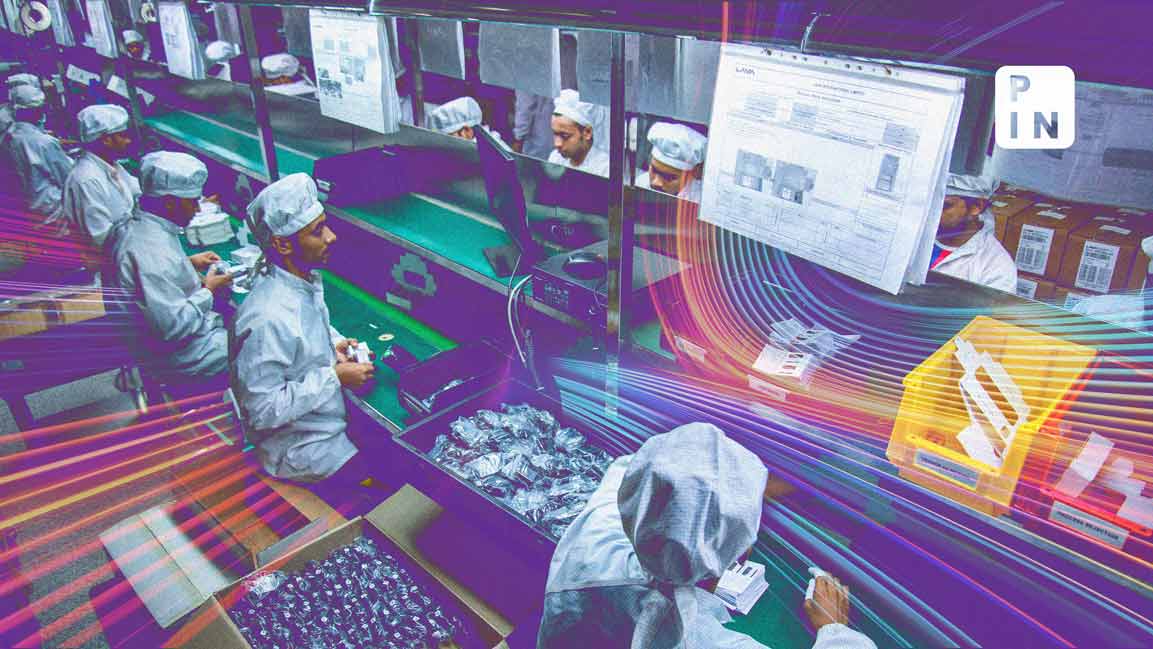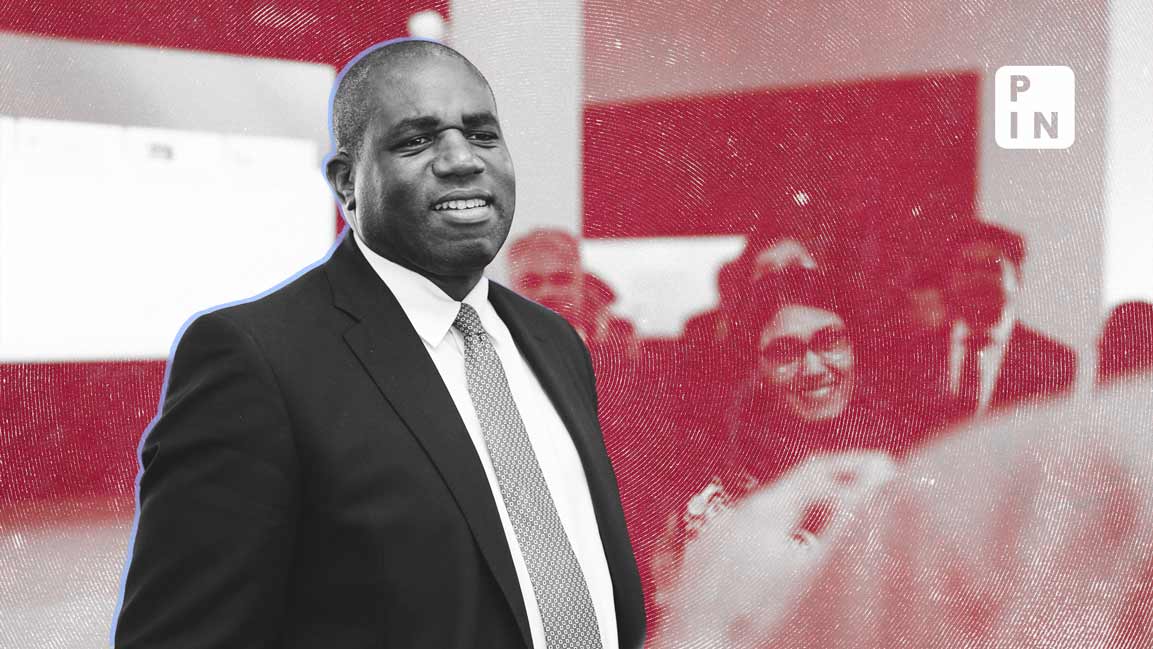- | 3:06 pm
Cut import tariffs on parts to triple exports by 2027, phonemakers tell govt
In report ahead of 1 February interim budget, the Indian Cellular and Electronics Association suggests simplifying current intricate tariff structure to boost global competitveness

Indian mobile phone manufacturers have asked the government to slash the taxes on imports of phone components, which in turn will boost domestic production of handsets and help the industry become globally competitive.
In a report ahead of the interim budget, which will be presented on 1 February, the Indian Cellular and Electronics Association (ICEA) recommended simplifying the current intricate tariff structure into three distinct slabs: 0%, 5%, and 10%.
This revision, the manufacturers said, will help triple mobile phone exports to $39 billion by 2027, up from $11 billion in 2023, and almost double domestic production to $82 billion by 2027 from last year’s $44 billion.
The step-up in domestic production following the rationalization of the taxes will help domestic businesses compete against counterparts in China and Vietnam, where input tariffs are much lower, the manufacturing body said.
India’s average most favored nation tariff for inputs is 8.5%, higher than China’s 3.7%, ICEA said in the report, adding that in effect, Beijing’s tariffs are closer to zero because most mobile production occurs in ‘Bonded Zones’ where all inputs are at zero tariffs.
In Vietnam, about 80% of the components that nation imports come from countries with which it has free trade agreements, leading to a lower average tariff of 0.7% when compared with India’s 6.8%, ICEA said in the report, titled ‘Comparative Study of Import Tariffs Impacting Mobile Manufacturing and Exports.’
Duty structure
India’s smartphone manufacturing ecosystem has undergone a sea change, with 78% import dependency in revenue terms in 2014-15 and only 4% in 2022-23. Now, 99.2 % of mobile phones sold in India are made in India. As India’s domestic production exceeds domestic demand, while domestic smartphone demand, except for very high-end phones, is slowing down, exports have become the main driver of future growth and job creation.
According to ICEA, India’s smartphone exports jumped 100% in FY 2022-23 to $11.1 billion over the previous fiscal. The industry expects exports of $15 billion in FY 2024. Exports will form 30% of the total $49-50 billion production in the current fiscal. India must only match China and Vietnam’s competitive tariff regime and other factors that impact competitiveness; export growth will also start seeing a slowdown beyond the current fiscal.
Pankaj Mohindroo, Chairman of ICEA, said, “To achieve high export, India needs more than just ambition; it requires a tangible shift of global value chains, bringing major production lines to India and integrating our businesses into the international supply web.” He added, “India has an immense opportunity to increase its competitiveness and large-scale manufacturing to address the global market and integrate into global value chains by making our tariffs competitive vis-à-vis competing nations.” ICEA study shows that India’s simple average MFN tariff for inputs is 8.5%, higher than China’s 3.7%. In practice, China’s tariffs are closer to zero because most mobile production occurs in ‘Bonded zones’ where all inputs are at zero tariffs.
Matching up to rivals
India’s smartphone manufacturing ecosystem has evolved, with the industry significantly reducing its reliance on foreign imports from 78% in 2014-15 to just 4% in 2022-23. Presently, 99.2% of mobile phones sold in the country are made in India, the report said.
With India’s local production surpassing its internal demand and domestic smartphone demand plateauing, except for very high-end models, exports have become the central pillar for future growth and job opportunities, the report said.
In FY23, India’s smartphone exports rose to $11.1 billion, double the previous year’s figure, and the industry expects exports to reach $15 billion this year, making up 30% of the expected total production of about $50 billion.
To sustain this export growth beyond the current fiscal, India needs to align its tariff regime and other competitiveness factors with those of China and Vietnam.
“Attaining high export levels requires more than ambition for India,” Pankaj Mohindroo, chairman of ICEA, said, adding that it “demands a significant realignment of global value chains, attracting major production units to India, and integrating our businesses into the international supply web.”
India stands at a crucial juncture to enhance its competitiveness and large-scale manufacturing for the global market, which can be achieved by aligning its tariffs with those of competitors, Mohindroo added.
Production disadvantage
ICEA said that more than 1,600-2,000 components are needed for mobile phones, and since not all can be made locally, rationalizing tariffs is crucial for India to become a global smartphone manufacturing hub. Currently, high tariffs are forcing Indian manufacturers to shell out 8-10% more on components than their Vietnamese or Chinese counterparts, it said.
The ICEA report focuses on how higher tariffs on mobile components, particularly in printed circuit board assembly (PCBA), are detrimental to domestic producers. Indian companies, with almost 96% capability in PCBA assembly, still face a 2% higher production cost than competitors due to tariffs. This affects the entire value chain, adding costs at both the sub-assembly and component stages, the report said.
The report also emphasized India’s potential role in the global market by maintaining low tariffs until local component production is established. It pointed out challenges in manufacturing high-value components like processors and memory, currently dominated by major global companies. India can produce simpler components, like inductors and resistors, but lacks scale, it added.
Highlighting the challenges for sub-assembly manufacturers in India, ICEA said domestic component prices are often set close to the imported cost after tariffs, creating a 6% cost disadvantage compared to Vietnamese and Chinese manufacturers. This, in turn, affects negotiations with global input suppliers and hinders foreign smartphone makers from moving assembly to India. Zero tariffs in China’s export zones contribute to its status as a top smartphone exporter, the report said.
The ICEA study also indicated that despite the proposed reduction in customs duty, the government stands to gain significant revenue. Over five years, the government could earn an additional ₹1 trillion through increased goods and services tax from higher smartphone production and sales, along with ₹60,000 crore from customs duties, even after implementing the production-linked incentives (PLI) scheme recommendations.













